Categories
Subjects
Authors
Artists
Venues
Locations
Calendar
Filter
Done
June 21, 2022 – Review
Documenta 15, “lumbung”
Kevin Brazil
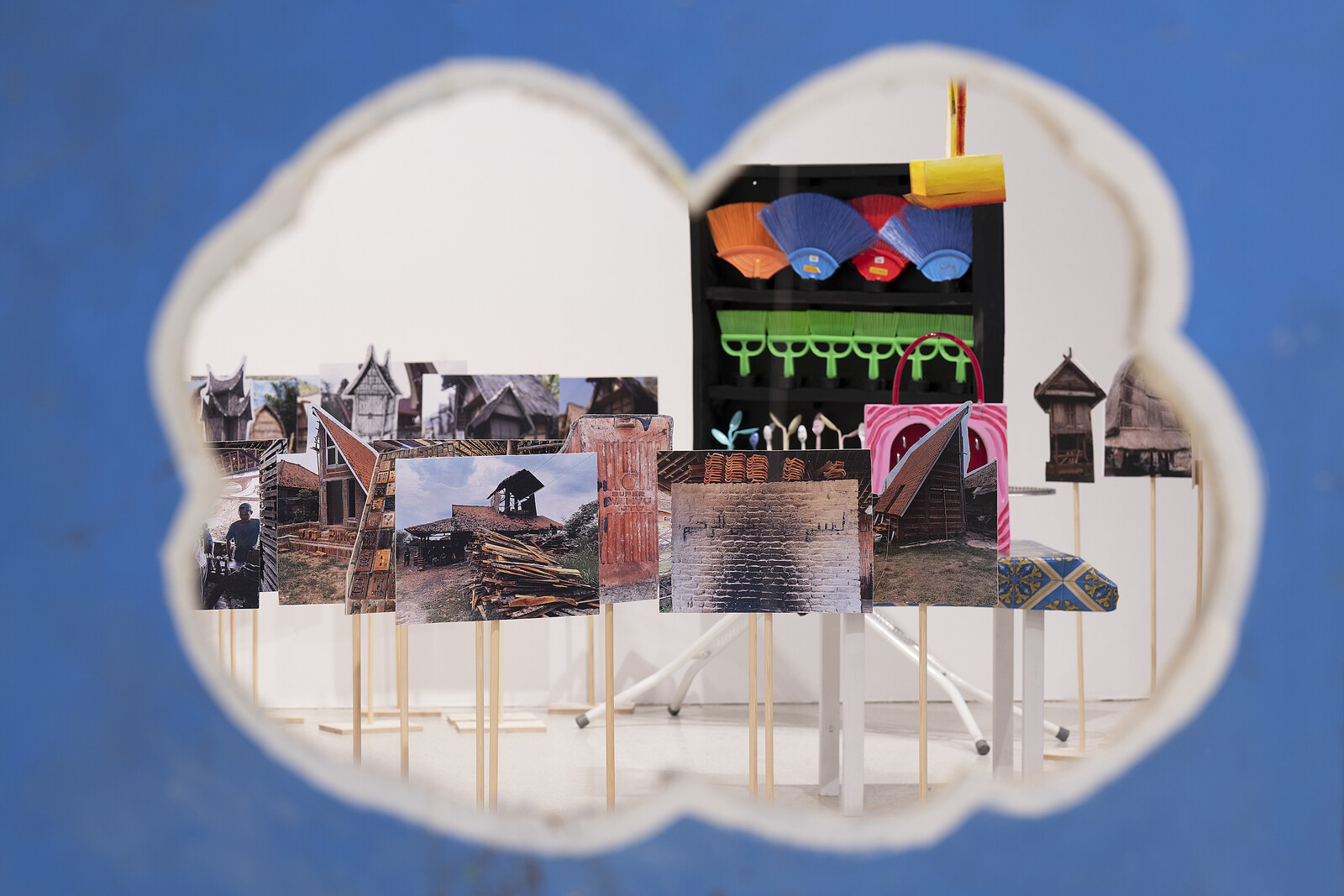
In the first of our dispatches from Documenta 15 over the next 100 days, Kevin Brazil considers the exhibition as an experiment in “the art of administration.”
At the opening press conference of Documenta 15, held in a Kassel sports stadium, the Indonesian collective ruangrupa invited the audience to sing along, “karaoke style,” to a music video created by Tropical Tap Water. In the lexicon of terms developed by ruangrupa to explain their curatorial ethos, this video was a “harvest”—a gathering of the fruits of a process—undertaken by one of the 1,500 artists working and sharing resources within the Documenta ekosistem (a more limited number are invited to exhibit). It showed people painting and playing music in studios, with diagrams and flowcharts mapping the stages by which the song was created. Lyrics flashed on screen, riffing on the idea of a “baskom,” or washbowl: “To decentralize Europe / We use the baskom.” Some of the participating artists half-heartedly clapped along, but the audience was otherwise largely silent.
Collaboration, participation, and process over product: these are the practices ruangrupa aim to foster in the activities—from childcare to composting—taking place across Documenta’s 100 days. And, indeed, in the meetings, financing, and …
June 10, 2017 – Review
Documenta 14
Anders Kreuger
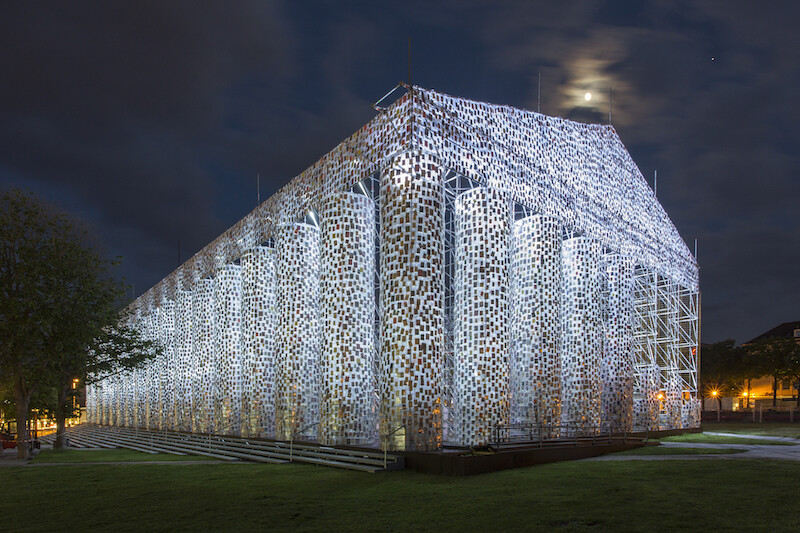
“We all act as if we have no choice but to consume more and more” This quote, from Mongolian artist Ariuntugs Tserenpil, serves as the first of three titles for these reflections on Documenta 14 in Kassel. Its label of “the world’s most important exhibition” must still carry some weight. Otherwise, how to explain the lively debate around the calculatedly visionary and/or arrogant decision to split it into two halves—on Greek and German soil—and what might be learned from it? Any attempt to rapidly and exhaustively dissect Documenta 14 is a fool’s errand. Nowadays, any institution of this magnitude is treated as too big to fail and is therefore all the more vulnerable to failure. What used to be a museum of 100 days in a handful of buildings is now a festival lasting 163 days, with 200 authors, over more than 50 venues in two cities far apart. The near impossibility of capturing every facet of the exhibition is built into every viewer’s experience. Such are the diktats of continued growth that its organizers must try to oppose from within, while at the same time only pretending to do so. By the logic of subversion, being all the …
June 7, 2017 – Review
"We Come Bearing Gifts"—iLiana Fokianaki and Yanis Varoufakis on Documenta 14 Athens
iLiana Fokianaki / Yanis Varoufakis
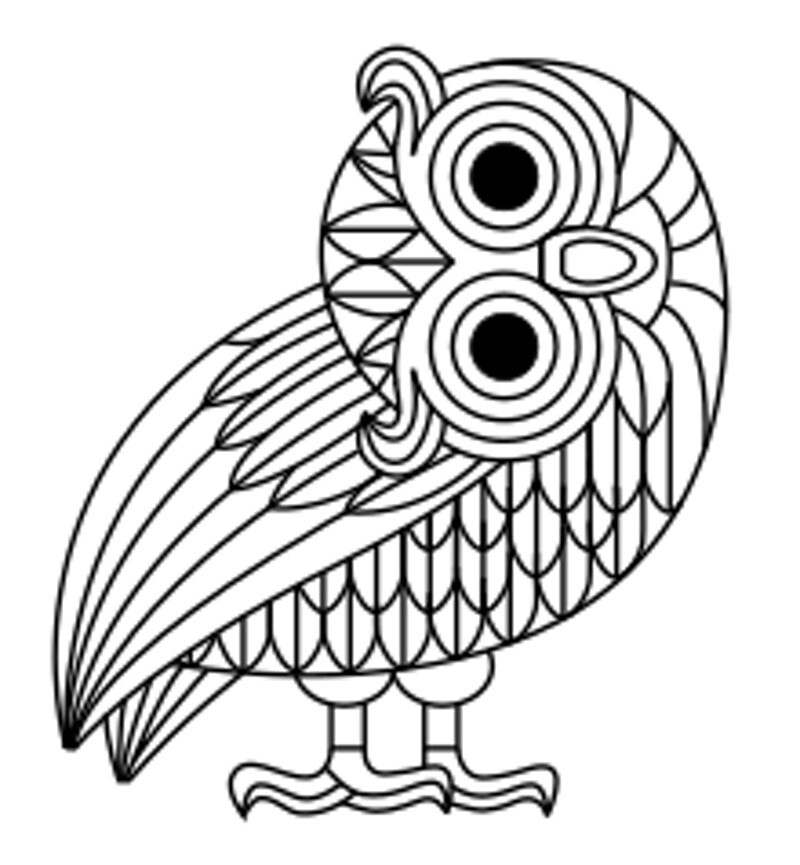
Created in 1955 by artist and curator Arnold Bode, Documenta sought to advance the cultural reconstruction of Germany within the postwar European order. Recurring every five years, it has since unfolded into a periodic forum for contemporary art. When Adam Szymczyk was appointed artistic director of Documenta 14 in November 2013, he proposed calling the exhibition “Learning From Athens,” opening it first in the Greek capital and then in its traditional home in Kassel. Four years later, with the Greek exhibition now underway and the German edition about to open, iLiana Fokianaki and Yanis Varoufakis share their views on the show, its development, and its implications.
iLiana Fokianaki: In the beginning, when it was first announced that Documenta 14 would be held in Athens, I believed there was a purpose to the experiment. How would a rigid institution be transformed by its curatorial team living and operating in a city of crisis? I thought that the moment one performs such a “move” there must be a particular reasoning behind the relocation, as well as the selection of the location. Two years later, and with the exhibition now open, I am still unable to answer the question of “why Athens?” At the …
April 10, 2017 – Review
Documenta 14, “Learning from Athens”
Ben Eastham
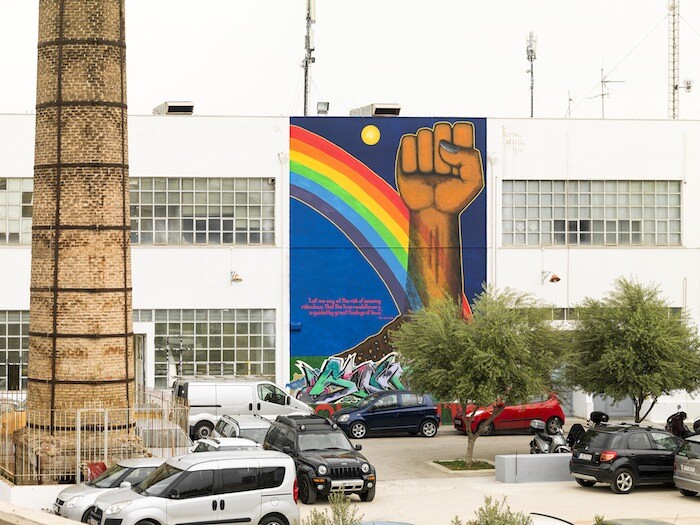
The fourteenth edition of Documenta takes place, for the first time in the institution’s history, across two locations. By staging it in Germany and Greece, and expressing the hope that an exhibition bankrolled by the former might effectively critique the infrastructures of power that have immiserated the latter, curator Adam Szymczyk signalled that this would be a Documenta defined by its internal contradictions. The embrace of paradox continued in the press conference for the Athens opening, during which Szymczyk spoke about the possibility of “learning from Athens” through a process of “unlearning what we know.”
That revealing “we” encapsulates some of the concerns surrounding the decision to splay Documenta 14 across a fragmenting Europe. Not the least of these is that the southern city might be expected to play the role of exotic other to the visiting northern institution, with whose western European sensibilities the visitor is assumed to identify. These and other conflicts between the manifest aims of Documenta 14 and its underlying structures are never entirely resolved, but the same might be said of any exhibition of contemporary art on a comparable scale. Indeed, Szymczyk’s statement to the press suggested a strategy predicated on acknowledging and then exploring the …
April 27, 2016 – Review
"Images"
Antje Stahl
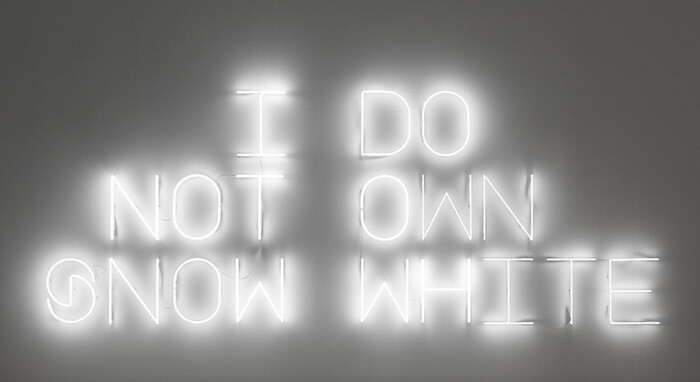
Annlee quietly welcomes you to the Fridericianum’s ticket counter. Though she is still invisible, her voice embraces those standing in the great entrance hall of the museum. “Can you imagine me?” she asks melancholically, “I can imagine you… It’s easy. I can see you. And I can see her.” Her face appears in Pierre Huyghe’s video Two Minutes Out of Time (2000), projected on a big white wall that serves as a screen, visible right after you pass a bright neon sign that reads, I Do Not Own Snow White (2005). Annlee, like Huyghe’s neon, is a never-ending story of copyright and authorship. After purchasing Annlee from a Japanese agency, Huyghe and Philippe Parreno used her image in their works—as in Huyghe’s video, which explores the disembodied space the animated character inhabits, and her multiple personas—and licensed her out to other artists as well.
Curated by Susanne Pfeffer, “Images” is a group show in which images are indeed the artists’ starting point. After encountering Snow White and Annlee, one thinks of image appropriation as it was famously framed in the canonical exhibition “Pictures,” curated by Douglas Crimp for Artists Space, New York, in 1977, which questioned both the possibility and the …
June 10, 2012 – Review
Documenta 13
Ana Teixeira Pinto

Remains, residues, remnants, repairs, relics. The 13th edition of Documenta, curated by Carolyn Christov-Bakargiev, inhabits a strange temporality. The exhibition includes little limestone figurines, the “Bactrian princesses,” the remnants of a civilization long gone (Central Asia, ca. 2000 B.C.); deformed artifacts from the Beirut National Museum, damaged during the Lebanese Civil War; empty chrysalides (Kristina Buch’s The Lover, 2012); a handful of bottles that appear in Giorgio Morandi’s paintings, some of which the artist also painted over; scraps taken from the site in Afghanistan where the Bamiyan Buddhas once stood, shown together with salvages from the 1941 Allied bombings, a fragment of a meteorite which hit Earth in 1954, and burnt books reconstituted in stone (Michael Rakowitz’s What Dust Will Rise, 2012); photographs of craters, or the “bomb ponds,” which resulted from the American bombardments of Cambodia during the Vietnam war (Vandy Rattana’s Takeo, 2009); a video installation juxtaposing the reconstructed Fridericianum in Kassel to the razed Dar ul-Aman palace in Kabul (Mariam Ghani’s A Brief History of Collapses, 2011–2012); the photographs of Lee Miller bathing in the Führer’s bathtub the same day he committed suicide in his Berlin bunker (Lee Miller in the Bathtub of Hitler’s Apartment in Munich, …
June 9, 2012 – Review
Documenta 13
Quinn Latimer
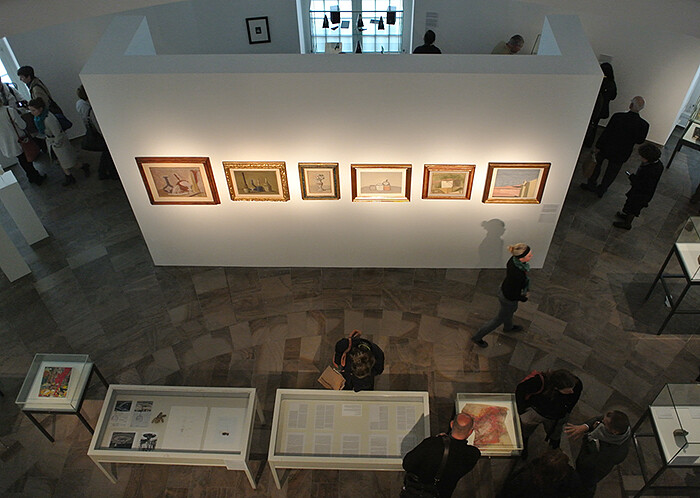
“When we read, there is a voice inside our minds that narrates aloud, but silently, in what has been termed ‘subvocalization.’ Our accelerated way of life—the dissemination of speed-reading techniques, for example—dissolves that voice. In response, the Writers Residency seeks moments of ‘chorality’: instances of mutual commitment, whether loud or muted … through its location in the Dschinghis Khan Restaurant, the Writers’ Residency investigates the possibilities of privacy in a public space.”
Why did this passage in Documenta 13’s flood of press materials so hook me? Perhaps because as I moved through the mega-exhibition and its installations and performances and archives of artists, poets, musicians, theorists, feminists, physicists, and art-world drop-outs that comprise the participants of Carolyn Christov-Bakargiev’s supremely impressive and affecting show, the words “commitment” and “privacy” kept appearing refrain-like in my thoughts. Certainly this was the most politically committed exhibition I could remember ever seeing (the tired and exploitive “political” theatrics of the recent Berlin Biennale notwithstanding). And certainly the radical intimacy of so many of the works and creative lives on view at Documenta 13 presented an expanded definition of the role of the internal life within institutional space. That their Writers’ Residency takes place in a restaurant …
June 7, 2012 – Review
Documenta 13
Filipa Ramos
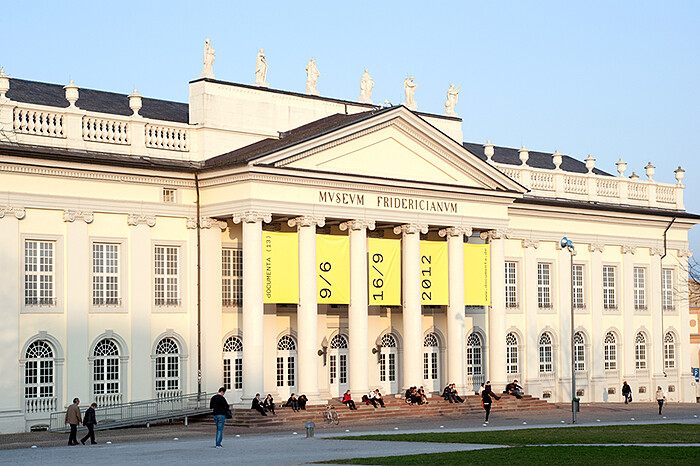
Postcards from Kassel
Postcard 1: The Format
Dear reader, I hope these lines find you well, wherever you are right now. I have decided to address you through postcards, as to remain on Documenta 13’s wavelength. In fact, those who have followed the development of this Documenta may have noticed that the format of the letter was, from an early stage, the preferred means of communication. It was used during the preparation of the show, to give insight into the working processes and to outline some key issues of the exhibition (signed by the Artistic Director, Carolyn Christov-Bakargiev and originally distributed as Letter to a friend, it was subsequently published as Number 003 in the series: Documenta 13: 100 Notes – 100 Thoughts).
Now, here in Kassel, the total bareness of the first rooms of the canonical core, the Kunsthalle Fridericianum, is broken by the display of Kai Althoff’s letter to Christov-Bakargiev explaining his decision not to take part in the exhibition (“life” was more important)—although a work of Althoff’s is, despite this, still featured in the Rotunda. In the same building, on the first floor, visitors are presented with two walls covered with letters from official organizations that once more …